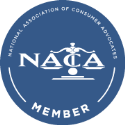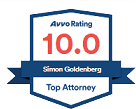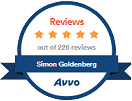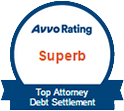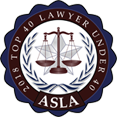Federal Student Loan Rehabilitation
New York Debt Relief Law Firm
A rehabilitation program generally entails a payment schedule wherein the borrower makes 9 consecutive monthly payments over a period of 10 months. The payments are determined by the collection agency and are based on the borrowers income, as reflected on their recent tax return and/or pay stubs. If the income-based rehabilitation payment is unaffordable to the borrower, then a reduced payment plan can be requested based on documented expenses (rent, car payment, food, transportation, utilility bills, etc...). By processing these expenses, the resulting rehabilitation payment should be reasonable and affordable.
Our lawyers help people find solutions to their delinquent and defaulted student loans. If you are overwhelmed with numerous accounts at various agencies, our office can conduct "due diligence" to identify the status of your accounts as well as the available resolution options, which may include student loan rehabilitation, loan consolidation, loan forgiveness, disability discharge, or even student loan settlement. Student loans can be complex and confusing. Allow our experienced professionals to help guide you through the process and ease the anxiety that often accompanies juggling large amounts of debt.
About Student Loan Rehabilitation
Government-backed student loans have several different resolution options available for accounts. The options available are usually dependant on the type of loan and it's status. For example, rehabilitation programs are not available on private student loans. It is also oftentimes unavailable on government or state-backed loans that are in judgment status. In our law firm, we see that many client's seek to rehabilitate their Direct Loans and FFELP loans guaranteed by the Department of Education, as well as state-issued loans from entities such as New York State Higher Education. In order to address a Perkins Loan, a borrower would need to contact the educational institution directly, not the loan servicer or lender.
Only loans that are in default status may be eligible for a rehabilitation program. Even if your federal taxes are being offset and/or your wages are being garnished, a rehabilitation program can still help you get your loan out of default. If a garnishment has already started, the borrower may have to make voluntary rehabilitation payments in addition to the garnished amounts. Garnighments are not considered "voluntary payments", and as such, do not apply to the rehabilitation. Oftentimes, a request to stop the garnishment can be made after making 5 consecutive monthly rehabilitation payments at an amount agreed upon with the collector.
Benefits of Student Loan Rehabilitation
There are many great features of loan rehabilitation. When the program is succesfully completed in accordance with the rehabilitation agreement, a borrower can enjoy some or all of these benefits:
- The loan status will be removed from "default" and updated on the borrowers credit report
- The borrower can be decertified for offset of their income tax refund
- Admin Wage Garnishment will stop
- The borower can become eligible for new student loans
- Collection fees will stop to accrue
Although there are many benefits to rehabilitation, it is also important to keep in mind that "late payments" on the rehabilitated loan will not be removed from the credit report. Also, the collection fees that accrued during default can be added on to the principal on the new loan, causing a higher total repayment. However, our law office has encountered many instances where the collectors rehabilitation agreement includes a provision where the collection fees are capped (at 16% or 18.5%). This can sometimes effectively reduce a borrowers liability if their collector has been charging a higher rate, such as 20% - 25%. As of July 2014, upon the sale of the loan, the collection fees are limited to a maximum of 16%.
Completing a Rehabilitation Program
Upon completing the rehabilitation program, the account(s) are removed from default status; the default information is removed from the credit report with experian, equifax, and transunion; the borrower is recertified to receive federal student aid; and is de-certified for federal tax refund offset. Any collection fees that have accrued may be added on to the principal balance in the new loan. The account can regain elegibility for certain benefits if they were available on the loan prior to default, such as deferments, forebearances, payment plans, and loan forgiveness options.
Once the program is completed, it can take up to 90-days for the loan to be sold to a new lender, and at that time, the borrower must elect a student loan payment plan and proceed to make regular monthly payments to their new loan servicer. In the interim, the borrower should continue making the regular rehabilitation payment until instructed otherwise. If the borrower completes the rehabilitation program, and subsequently defaults, there is a possibility that they will not have a new opportunity to rehabilitate that particular student loan.
Student Loan Lawyers in New York City
At the law office of Simon Goldenberg, our attorneys are experienced in navigating the complexities of debt resolution, including private and federal student loans. Our legal staff helps residents of New York understand the solutions available to them and we advocate to get the best resolution under the borrowers unique circumstances.
We offer is free phone evaluation to help identify how our student loan debt relief lawyers may be of assistance in a particular matter. If you are in New York City and are experiencing issues with your student loans, speak to our law firm to learn what options may be available to you. Our lawyers are here to help.

